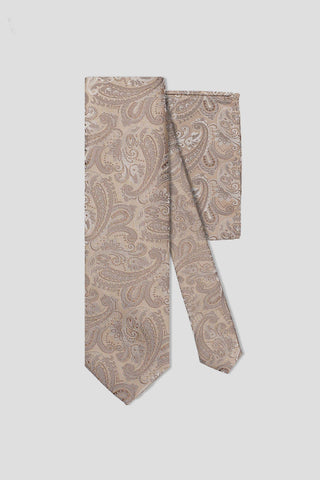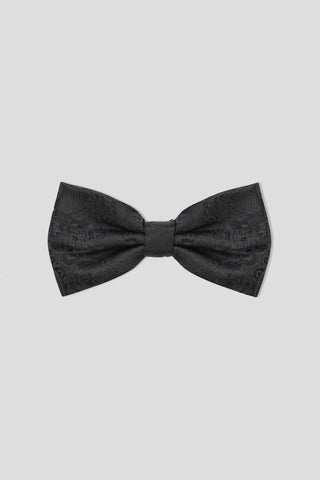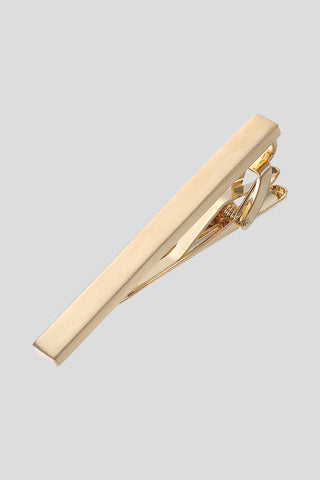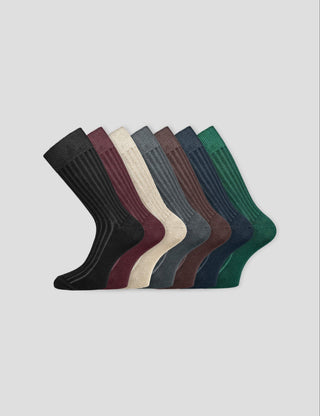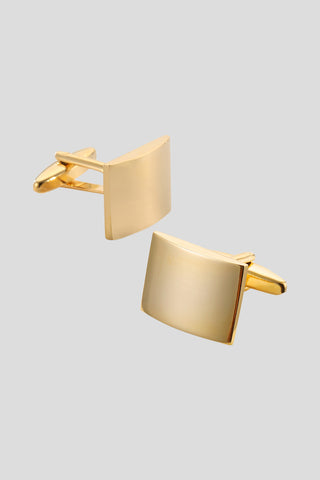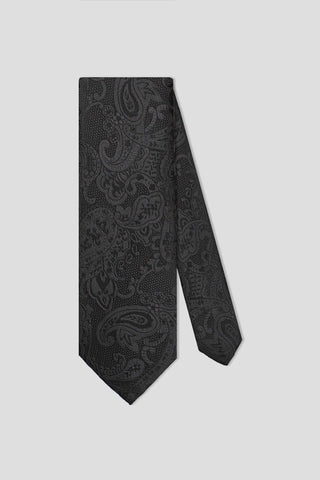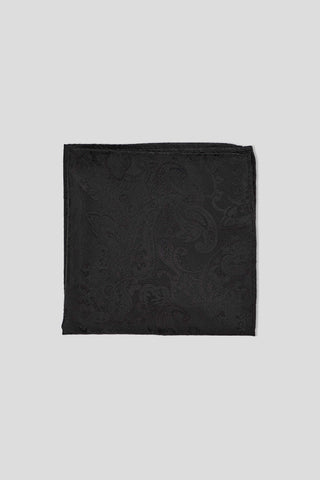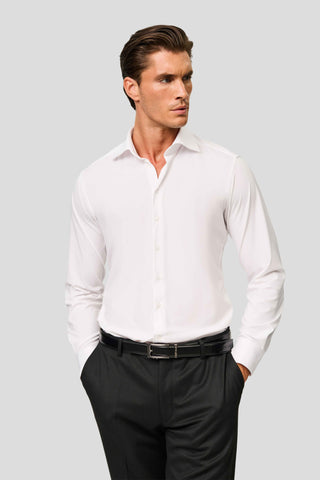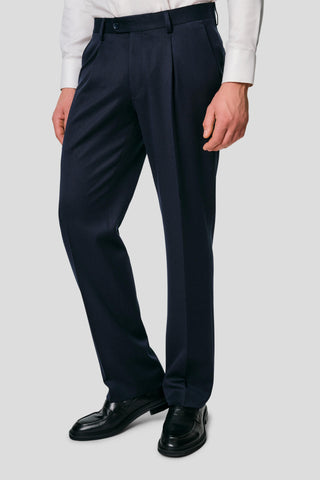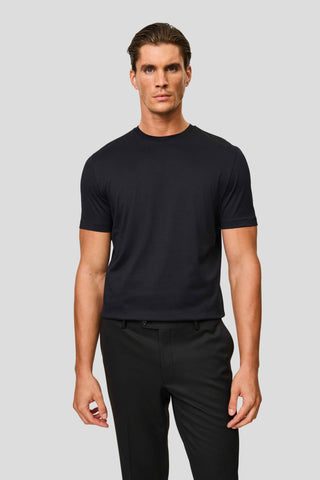Derfor er hør og uld de bedste valg til sommer – stilfuld komfort til varme dage og bryllupper
Når temperaturen stiger, og kalenderen fyldes med sommerbryllupper, havefester og lyse nætter, står valget af tøj øverst på dagsordenen. Hvordan kombinerer man stil, komfort og funktion i ét outfit – uden at gå på kompromis med hverken elegance eller velvære?
Svaret findes i to naturlige materialer, der har klaret tidens tand og modstået fast fashion: hørjakkesæt og uldjakkesæt. Disse klassiske tekstiler tilbyder ikke bare et sofistikeret udtryk, men også en helt særlig komfort, især i sommervarmen. Hos SUITCLUB.DK har vi nøje udvalgt kollektioner i begge materialer – og her er grunden til, at de er dine bedste sommerpartnere.
1. Temperaturregulerende egenskaber – naturlig aircondition i dit tøj
Det mest åbenlyse fællestræk ved både hør og uld er deres evne til at tilpasse sig temperaturen omkring dig.
-
Hør er ideelt til varme, tørre og solrige dage. De hule, grove fibre tillader luft at strømme frit gennem stoffet, og den høje absorberingsevne sikrer, at sved fordamper hurtigt og effektivt. Det betyder, at du føler dig tør og tilpas – selv i direkte solskin.

-
Uld, fungerer som et naturligt klimaanlæg for kroppen. Det kan holde på varmen, når du har brug for det – men er lige så effektivt til at aflede varme, når det bliver lunt. Uld kan absorbere op til 35 % af sin egen vægt i fugt uden at føles våd, hvilket gør det perfekt til uforudsigelige temperaturer og lange bryllupsdage.
2. Komfort hele dagen – fra vielse til midnatsdans
Uanset om du skal til havefest, sommerbryllup eller blot ønsker et lettere business-look i sommervarmen, handler det om at føle sig godt tilpas fra morgen til aften.
-
Hør har en let og afslappet struktur, som gør det særligt behageligt at have på i flere timer ad gangen. Stoffet tilpasser sig din krop, og selv efter flere timers brug føles det ikke tungt eller fugtigt.
-
Uld er smidigt og naturligt elastisk. Et jakkesæt i premium uld fra vores kollektion giver dig bevægelsesfrihed og en let, skræddersyet følelse – uden at du skal kæmpe med stivhed eller overophedning.
3. Stil og karakter – elegance med personlighed
Sommeren er ikke kun en sæson – det er en stil. Hør og uld bringer hver deres æstetiske udtryk til garderoben:
-
Hør udstråler afslappet luksus. Med vores hørjakkesæt få du naturlige folder og rå struktur har det en ubesværet, moderne elegance. Det er perfekt til udendørs bryllupper, strandfester og solrige destination weddings.
-
Uld signalerer klassisk stil og tidløs raffinement. Vores PREMIUM uldjakkesæt kombinerer blødhed, struktur og finesse – ideel til kirkelige ceremonier, firmafester og sommerreceptioner.
4. Holdbarhed og bæredygtighed – kvalitet med samvittighed
At vælge hør og uld er ikke kun et spørgsmål om komfort og stil – det er også et ansvarligt valg.
-
Hør er en af de mest bæredygtige tekstilfibre. Den kræver minimalt vand og færre pesticider at dyrke end eksempelvis bomuld. Derudover efterlader hørplanten næsten intet spild, da dens biprodukter kan bruges i alt fra linolie til papir.
-
Uld er naturligt nedbrydeligt og selvrensende. Det betyder færre vaske og et mindre klimaaftryk i hverdagen. Vores uldjakkesæt er designet til at holde sæson efter sæson, og jo bedre du passer på dem, desto smukkere bliver de.
5. Let at style – din sommergarderobe, løftet til næste niveau
Med både hør og uld i din sommergarderobe får du fleksibilitet og frihed til at klæde dig op eller ned:
-
Brug en hørskjorte med opsmøgede ærmer og loafers til en afslappet sommerfest.
-
Vælg et PREMIUM uldjakkesæt med hvid skjorte og slips til formelle bryllupper eller receptioner.
-
Kombiner elementer: en hørskjorte under et uldjakkesæt eller hørjakkesæt giver både kontrast og komfort.
6. Vedligeholdelse med karakter
-
Hør bliver blødere og smukkere med tiden. Det kræver ikke strygning – de naturlige folder er en del af looket.
-
Uld behøver sjældent vask, da det er selvrensende. Hæng det til luftning, og det føles som nyt dagen efter.
To materialer, ét mål – at få dig til at føle dig fantastisk
Om du går efter den afslappede elegance i hør eller den raffinerede komfort i uld, så er begge materialer skabt til at give dig stil og velvære i sommervarmen. Hos SUITCLUB.DK tror vi på tøj, der arbejder med kroppen – ikke imod den.
Se vores udvalg af hørskjorter – perfekte til varme dage og sommerstemning.
Udforsk vores PREMIUM kollektion – eksklusiv komfort til årets vigtigste begivenheder.
FAQ – Ofte stillede spørgsmål om hør og uld i sommertøj.
1. Er uld for varmt om sommeren?
Nej, ikke nødvendigvis. Mange hør uld og tænker på en varm strik, men det der er særligt med uld er at det er temperaturregulerende og åndbart – og perfekt til formelle begivenheder om sommeren.
2. Krøller hør meget?
Ja, og det er netop en del af det naturlige, afslappede look, som mange elsker. Det gør tøjet levende og personligt. Det kan dog stryges ud.
3. Hvordan holder jeg et uldjakkesæt friskt?
Hæng det til luftning efter brug, og undgå hyppig vask. Brug en børste og en damper til at opfriske stoffet. (Aldrig vask sættet selv, tag det til rens)
4. Hvornår vælger man hør fremfor uld?
Det er en smagssag – uld kan give et mere formelt udtryk, mens hør ofte forbindes med noget mere afslappet. Dog kan man sagtens få formelle hørjakkesæt også.
5. Hvilket stof er bedst til sommerbryllup?
Begge kan fungere! Et lyst jakkesæt i hør er ideelt til udendørs bryllupper, mens uld giver et mere klassisk look til ceremonier og fest.












